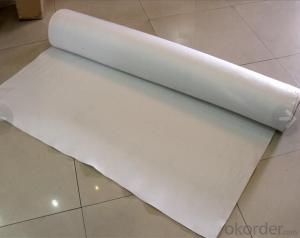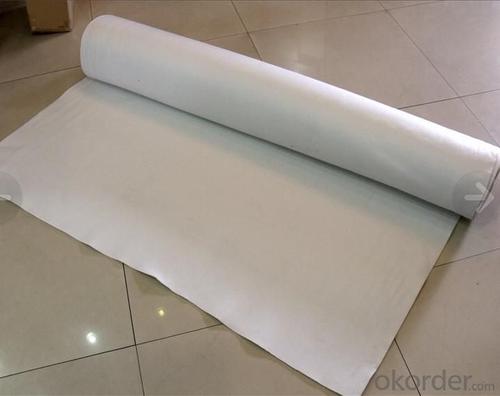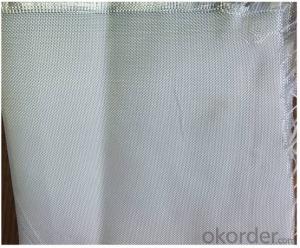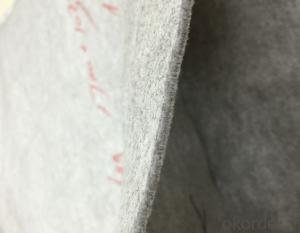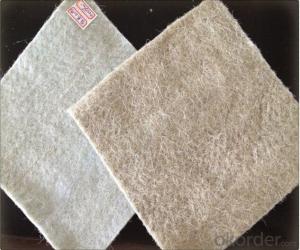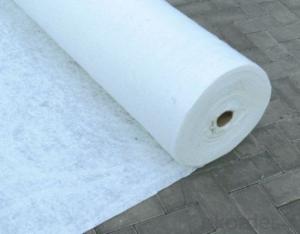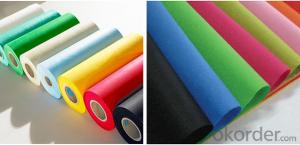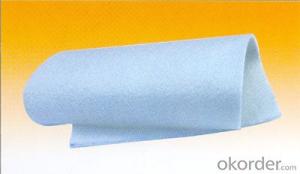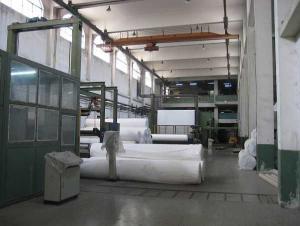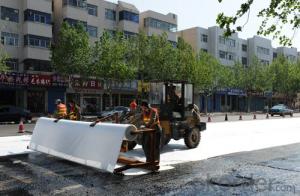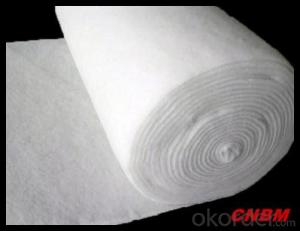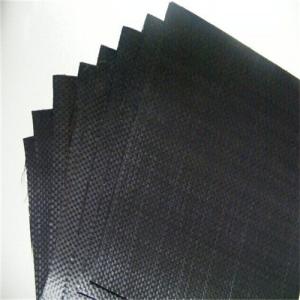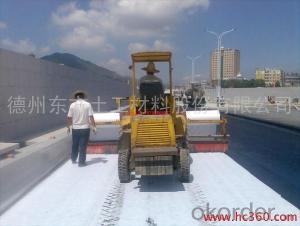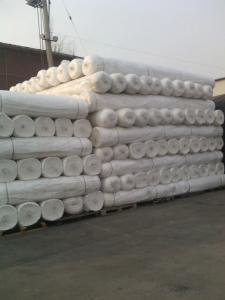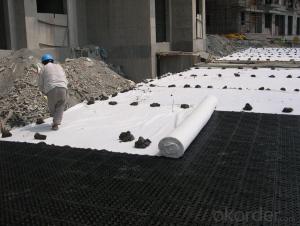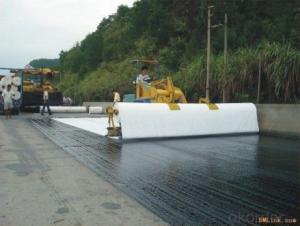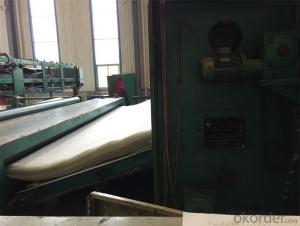White Geotextile Fabric for Stable Pet Needle Punched Geotextile in Road Construction
- Loading Port:
- Qingdao
- Payment Terms:
- TT OR LC
- Min Order Qty:
- 10000 m²
- Supply Capability:
- 500000 m²/month
OKorder Service Pledge
OKorder Financial Service
You Might Also Like
Structure of High Tensile Stable Pet Needle Puncehd Geotextile Description:
It widely used in civil environmental engineering and construction projects .
Such as railway , highway , road , landfill , gymnasium , dike , marine works ,
tunnel , tide flat , reclamation and environment protection projects.
They can be used in many fields, including:
1. Filtration of soils in drainage applications by retaining soil particles while
allowing for the free flow of water
2. Separation and stabilization in road and railway construction
3. Prevention of soil movement in erosion control measures
4. Cushioning and protection in many containment projects
Main Features of the Stable Pet Needle Puncehd Geotextile:
1. High strength , good creep property , excellent erosion resistance , aging-resistance and heat resistance
2. Separation , filtration , drainage , reinforcement , protection , and maintenance function
Stable Pet Needle Puncehd Geotextile Images
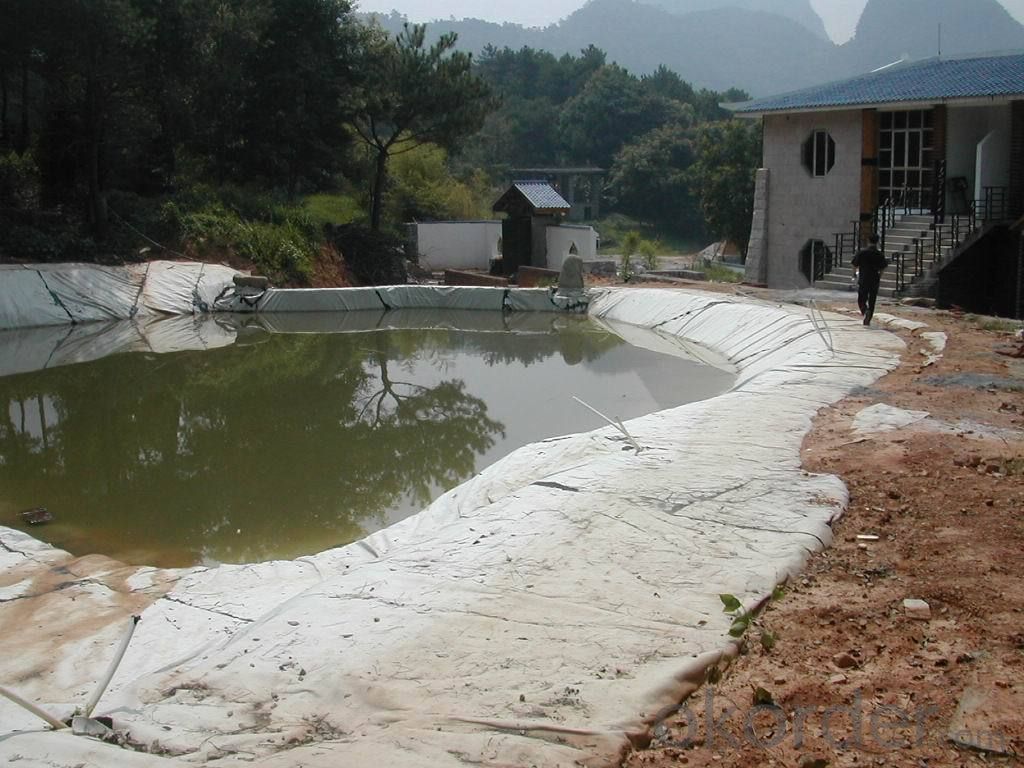
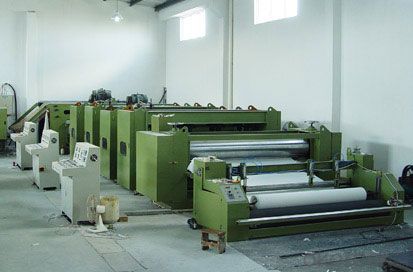
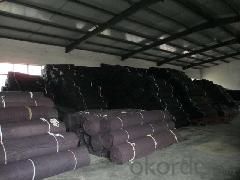
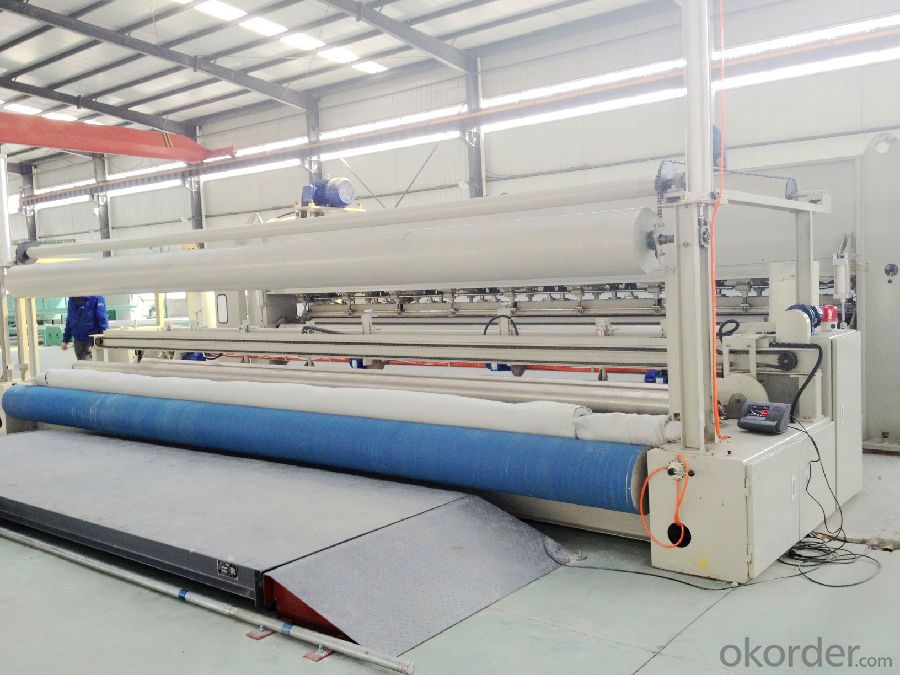
Stable Pet Needle Puncehd Geotextile Specification:
1. 80g/m2 -- 1800g/m2
2. 1-8m in roll width , the length as client’s request
No. | Specification(g/m2) | 100 | 150 | 200 | 250 | 300 | 350 | 400 | 450 | 500 | 600 | 700 | 800 | 1000 | Remark |
1 | Weight deviation, % | -8 | -8 | -8 | -8 | -7 | -7 | -7 | -7 | -6 | -6 | -6 | -6 | -6 | |
2 | Thickness, mm≥ | 0.9 | 1.3 | 1.7 | 2.1 | 2.4 | 2.7 | 3.0 | 3.3 | 3.6 | 4.1 | 4.5 | 5.0 | 5.8 | |
3 | Width deviation,% | -0.5 | |||||||||||||
4 | Breaking strength, KN/m ≥ | 2.5 | 4.5 | 6.5 | 8.0 | 9.5 | 11.0 | 12.5 | 14.0 | 16.0 | 19.0 | 22.0 | 25.0 | 31.0 | MD and CD |
5 | Breaking elongation,% | 25~100 | |||||||||||||
6 | CBR bursting strength, KN≥ | 0.3 | 0.6 | 0.9 | 1.2 | 1.5 | 1.8 | 2.1 | 2.4 | 2.7 | 3.2 | 3.7 | 4.0 | 5.0 | |
7 | Sieve Size O90 mm | 0.07~0.2 | |||||||||||||
8 | Vertical permeability coefficient, cm/s | Kx(10-1~10-3 ) | K=1.0 ~9.9 | ||||||||||||
9 | Tear strength, KN≥ | 0.08 | 0.12 | 0.16 | 0.20 | 0.24 | 0.28 | 0.33 | 0.38 | 0.42 | 0.46 | 0.53 | 0.60 | 0.75 | MD and CD |
FAQ
We have organized several common questions for our clients,may help you sincerely:
Q1: How about your company?
A1:Our company are one of the largest geosynthetic products supplier in the world.We have the products experience more than 20 years.Already export to USA/Germeny/Australia/Zambia/Brazil etc.more than 20 countries.Almost 10years.Our products including Geocell/Fiberglass Geogrid/Geomembrane/Geotextile/Geonet etc.
Q2.Does your products have good qualitity?
A2:Yes,we have do many big projects such as the 2008 Beijing Olympic BIRD NEST. Divert water from the south to the north project. And our products have CE certificate also.
Q3:How long can we receive the products after purchase?
A3:In the purchase of product within three working days, We will arrange the factory delivery as soon as possible. The pecific time of receiving is related to the state and position of customers.Commonly 15-20 working days can be delivery.
- Q: How do geotextiles improve the performance of geosynthetic clay liners?
- Geotextiles improve the performance of geosynthetic clay liners by providing additional reinforcement and stability. They act as a separation layer, preventing the mixing of different materials, such as clay and other fill materials. Geotextiles also enhance drainage capabilities by allowing water to flow through while retaining fine particles. Ultimately, they improve the overall strength, durability, and long-term performance of geosynthetic clay liners in various applications such as landfill liners and erosion control measures.
- Q: 300g / m2 geotextile permeability coefficient is generally how much?
- Geotextile cloth short fiber geotextile and long fiber geotextile, the two geotextile permeability coefficient is basically the same. According to the requirements of the national standard 300g / ㎡ geotextile permeability coefficient for the K * (10 negative side ~ 10 negative three power), K is between 1.0-9.9 values. From the indicators can be seen 300g / ㎡ specifications of the geotextile has a good water filter, can be used for water, filter them.
- Q: What are the key factors affecting the permeability of geotextiles?
- The key factors affecting the permeability of geotextiles include the fabric structure and composition, thickness, porosity, and pore size distribution. The type and arrangement of fibers or filaments, as well as the presence of any coatings or additives, can also impact permeability. Additionally, factors such as compaction, moisture content, and pressure can influence the ability of geotextiles to allow water or fluids to pass through.
- Q: Are geotextiles suitable for use in geogrid reinforced slopes?
- Yes, geotextiles are suitable for use in geogrid reinforced slopes. Geotextiles are often used as a separation and filtration layer in geogrid reinforced slopes to prevent the mixing of soil layers and ensure proper drainage, stability, and reinforcement. They help in distributing loads and reducing soil erosion, making them a valuable component in geogrid reinforced slopes.
- Q: How are geotextiles used in geotechnical engineering?
- Geotextiles are commonly used in geotechnical engineering to provide reinforcement, filtration, separation, and drainage in various construction projects. These permeable fabrics are placed within soil or rock structures to enhance their performance, prevent soil erosion, improve stability, and control water flow. Geotextiles are especially useful in road construction, embankments, retaining walls, landfills, and coastal engineering, as they offer cost-effective solutions and contribute to the sustainability and longevity of these structures.
- Q: How are geotextiles used in landfills?
- Geotextiles are used in landfills to help enhance the stability, drainage, and filtration of the waste disposal site. They are typically placed between the layers of soil and the landfill liner system to prevent soil erosion, control gas and liquid migration, and provide reinforcement for the overall structure.
- Q: How do geotextiles help with filtration in drainage systems?
- Geotextiles help with filtration in drainage systems by acting as a barrier that prevents the passage of fine particles while allowing water to pass through. They effectively filter out sediment, debris, and other contaminants, ensuring that only clean water flows through the drainage system. This helps to maintain the system's functionality and prevent clogging or blockages.
- Q: Can geotextiles be used for shoreline protection?
- Yes, geotextiles can be used for shoreline protection. They are commonly used to stabilize coastal areas and prevent erosion by acting as a barrier against wave action and water currents. Geotextiles help to retain sediment and provide structural support, making them an effective solution for shoreline protection projects.
- Q: Small-scale geotextile and geotextile materials have no effect on environmental protection?
- The basic impact on the environment, I am specializing in the production of geotechnical materials
- Q: What are the different geotextile installation techniques in erosion control?
- Some of the different geotextile installation techniques in erosion control include trenching, anchoring, stapling, and sowing. Trenching involves digging a trench and placing the geotextile into it, allowing it to filter water runoff and prevent erosion. Anchoring involves securing the geotextile to the ground using stakes or other fasteners to prevent movement. Stapling involves using staples or pins to secure the geotextile to the ground, providing stability and erosion control. Sowing refers to mixing seeds with the geotextile material and then laying it down, allowing vegetation to grow and reinforce the soil. These techniques can be used individually or in combination to effectively control erosion.
Send your message to us
White Geotextile Fabric for Stable Pet Needle Punched Geotextile in Road Construction
- Loading Port:
- Qingdao
- Payment Terms:
- TT OR LC
- Min Order Qty:
- 10000 m²
- Supply Capability:
- 500000 m²/month
OKorder Service Pledge
OKorder Financial Service
Similar products
Hot products
Hot Searches
Related keywords
